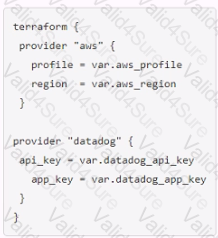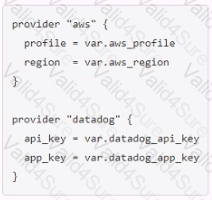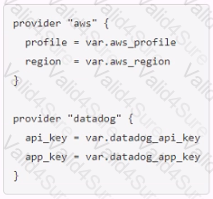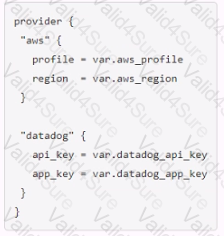Note! Following TA-002-P Exam is Retired now. Please select the alternative replacement for your Exam Certification.
The new exam code is Terraform-Associate-003
TA-002-P Exam Dumps - HashiCorp Certified: Terraform Associate
Question # 4
It is best practice to store secret data in the same version control repository as your Terraform configuration.
Question # 5
Which command should you run to check if all code in a Terraform configuration that references multiple modules is properly formatted without making changes?
Question # 7
You're building a CI/CD (continuous integration/continuous delivery) pipeline and need to inject sensitive variables into your Terraform run. How can you do this safely?
Question # 8
You ate creating a Terraform configuration which needs to make use of multiple providers, one for AWS and one for Datadog. Which of the following provider blocks would allow you to do this?
A)

B)

C)

D)
